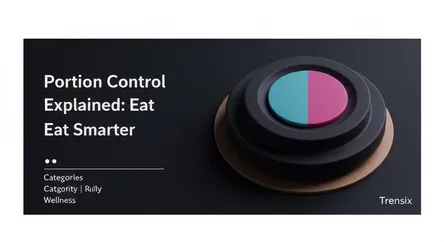Wellness
Portion Control Explained: Eat Smarter

Learn what portion control is and how this mindful eating practice can help you achieve your wellness and weight management goals.
What is it?
Portion control is the practice of managing the amount of food you choose to eat in one sitting. It's about understanding and controlling the quantity of food on your plate to avoid overeating. This is different from a "serving size," which is a standardized, measured amount of food, like what's found on a Nutrition Facts label. A portion is simply what you decide to serve yourself. The goal is to align your portion sizes with your body's actual energy needs, which helps in maintaining a healthy weight and ensuring you get nutrients without consuming excess calories.
Why is it trending?
Portion control is gaining popularity as a sustainable alternative to restrictive fad diets. With rising obesity rates and a greater focus on health and wellness, many people are seeking practical, long-term strategies for weight management. Research has shown that when offered larger portions, people tend to eat more, which can contribute to weight gain over time. As a result, there is a growing consumer demand for smaller portions, with many restaurants and food producers starting to offer more reasonably sized options and clearer calorie information to empower healthier choices.
How does it affect people?
Practicing portion control can have significant positive effects on an individual's health. It is a key strategy for weight loss and maintenance by helping to create a necessary calorie deficit. Beyond weight, it aids in better digestion, helps control blood sugar levels, and provides sustained energy throughout the day. Adopting simple habits like using smaller plates, measuring food, eating slowly, and filling half the plate with vegetables can make portion control easier. This mindful approach to eating helps people better recognize their body's hunger and fullness cues, leading to a healthier relationship with food.